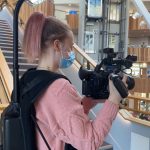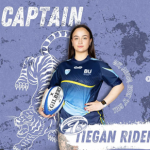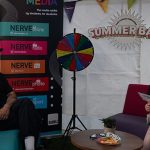 Produced by Guest blogger
Produced by Guest blogger
 This is a guest post written by Jess Miller, a second-year BA (Hons) Media Production Student. Read about her experience in the Client & Audience unit – a chance for students to work with local businesses or charities.
This is a guest post written by Jess Miller, a second-year BA (Hons) Media Production Student. Read about her experience in the Client & Audience unit – a chance for students to work with local businesses or charities.
In this unit, we gain real-world experience of what it is like to work with a client as part of a media “agency”. Each agency is made up of student groups, so you work closely with your peers. Within the group, we each assigned ourselves a role to highlight the areas of the project we were responsible for – looking to gain new skills or knowledge in an area we were not so familiar with or working on part of the project to work to our strengths.
Once our group was set, we were ready to meet our client. There was a range of different clients from local businesses to charity organisations – each assigned to a student “agency”. Generally, the clients had very few media products already attached to their brand, or they might not have the budget to hire a professional agency – this is exciting as there’s a high chance the work will be used in future campaigns or marketing.
 Here are 5 of my top tips/insights into being successful in this unit:
Here are 5 of my top tips/insights into being successful in this unit:
- Get to know your client – to get familiar we visited our client’s base before we started filming. It provided very useful as we got a feel for the area, we took photos on the recce and spoke with the patrons we’d be interviewing too. Speaking with the patrons allowed us to build a friendly rapport. We also were able to gain first-hand insight into what our clients would like to see come from the project.
- Listen to your client’s needs – This is all about knowing your client, and their audience! For example, suggesting a TikTok account if the business’ clients are 60+ wouldn’t be effective to meet the project aims. The purpose here is to create something the client can use for their future marketing.
- Consider your group skills – working with people that have a mix of abilities and strengths in different areas allows you to learn from one another, choose a clear lead for each area and then your project has multiple “experts”.
- Read and re-read the brief – throughout the project, ensure you are regularly reading your initial brief from your clients. Ask yourself: are you fulfilling the client’s needs? Will this be effective in a real-life application?
- Keep in regular contact with your clients – understand from the offset how regular your clients want to be contacted about the project so that you can meet their expectations – are you meeting in person, via zoom, or everything via email? Either way, make sure you stick to this agreement. Hearing about the project can help make the client feel like they are being looked after through the process.
This unit was insightful and gave me practical, real-world experience – I hope you enjoy it just as much as I did and that these top tips help you on your way to success!
 Placement experience inspiration for final year projects and direction for graduating
Placement experience inspiration for final year projects and direction for graduating Words from a Music and Sound Production Technology graduate
Words from a Music and Sound Production Technology graduate My first year as a TV Production student
My first year as a TV Production student








